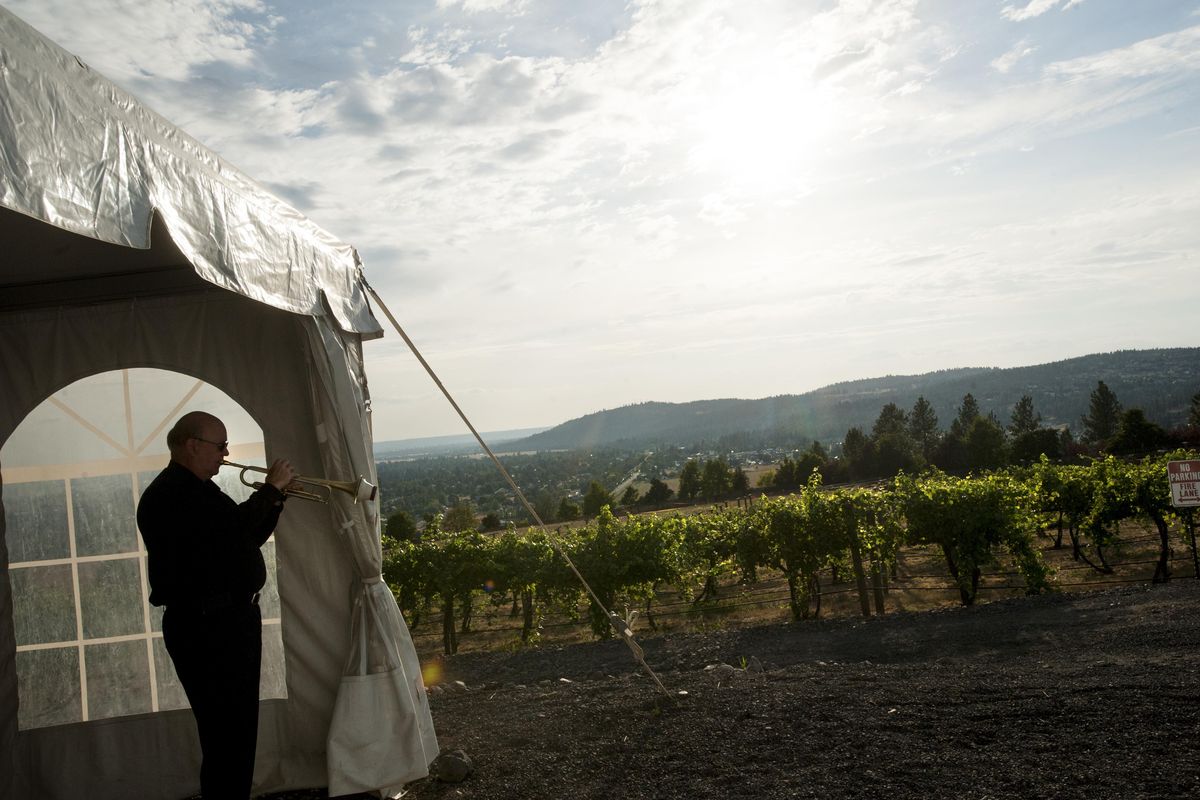Spokane Symphony heads back to the brink (so to speak) for annual Soirée on the Edge series

A longtime favorite event for fans of classical music returns to the grounds of Arbor Crest Wine Cellars next Wednesday.
For the Spokane Symphony’s Soiree on the Edge series, resident conductor Morihiko Nakahara has put together a lively program for both nights following a tradition that began during the former Symphony on the Edge concert series held at the Knitting Factory.
“It’s a mix of contemporary work and some of the more standard chamber orchestra works, the classical early romantic repertoire like Mozart,” Nakahara said. “I wanted to do something different. It’s important to have a variety that we can also put together in two rehearsals and make it interesting. It’s been a fun little puzzle.”
Several pieces by living composers such as Vivian Fung and Adam Schoenberg are offset by more standard classics by Maurice Ravel, W.A. Mozart and Georges Bizet. Nakahara explained that programming newer works has become easier in recent years.
“When I was starting out you would have to contact the publisher and they would send you a sort of preview score and a CD. Nowadays composers all have websites with PDFs of their scores and if they don’t then you can just email them and they’ll gladly share,” he said. “It’s gotten so much easier for conductors and also for audience members to seek out and become familiar with all these wonderful composers out there who may not have these big publishing deals.”
Nakahara is passionate about promoting new works including those by female composers. He mentioned Fung’s “Pizzicato for String Orchestra” in particular:
“I originally heard the piece as a string quartet and then I found out that she had also arranged it for a larger stringed orchestra. It’s definitely a different sound world,” he said, “but she’s able to create excitement really well just with the plucking.”
A common thread runs through the two programs.
“It feels almost like a story in two parts. There’s of course the French connection running through the more standard classical pieces. You have the Ravel paired with the Mozart ‘Paris’ symphony. Then we also have this Bizet symphony. It’s one of those pieces where for some reason we don’t tend to perform it very often but it’s great fun to do and to show off the orchestra.”
There is also a great connection between some of the more modern composers. Timo Andres and Gabriel Kahane are both part of a composing collective called Sleeping Giant, where they collaborate and share their work online. They share a desire to make contemporary compositions more accessible to audiences.
Both evenings heavily feature these contemporary works, but choosing these for performances can carry some difficulties. Some of the challenge comes with the eccentric rhythms now popular among composers.
“A lot of these composers and a lot of American composers will tend to write very rhythmically. They tend to have a certain kind of ‘groove’ and it can be exciting to listen to but it’s difficult to put together because it’s not always easy to follow.”
But Nakahara believes the symphony is up to the task.
“It takes some getting used to but our orchestra can handle pretty much everything when it comes to these contemporary composers,” he said. “Each kind of repertoire has its own sort of language. The orchestras have to be comfortable speaking those languages and I feel that our orchestra has gotten to the point where we’re fairly fluent. It gives us much more freedom in programming.”
The broad range of new works and the atmosphere of an outdoor concert serve to promote the casual classical environment that the Spokane Symphony aims to foster.
“The setting is beautiful,” he said. “It’s a different feel than typical outdoor concerts because the audience is just everywhere. Some are under the tent with the orchestra and some are all throughout the property in their favorite spots just sitting and listening even though they might not be able to see the whole orchestra.”